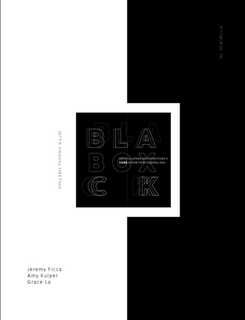Author(s): Adam Modesitt
Within highly complex computation-enabled assemblies, where can architects author composition? Within the procedural logic of individual components? Within procedural logic of the greater assembly? Or somewhere in-between? To these questions, this project proposes a simple answer: yes.
https://doi.org/10.35483/ACSA.AM.107.94
Unscripted: A Cenotaph for Richard Feynman
ADAM MODESITT
Tulane University
Within highly complex computation-enabled assemblies,
where can architects author composition? Within the pro-
cedural logic of individual components? Within procedural
logic of the greater assembly? Or somewhere in-between? To
these questions, this project proposes a simple answer: yes.
A speculative research project, the Cenotaph for Richard
Feynman, explores methods for managing, organizing, and
authoring complex geometric assemblies through drawing
and modeling alone, without scripting, optimization, or other
externalizations of compositional authorship. The project
adhered to four self-imposed ground rules. First, no typing
or coding. Interactive drawing and modeling only. Second,
no splines or curvilinear surfaces, neither in the result nor
in the design process. Rectangles and circles, cubes and
spheres only. Third, no parametric, formal variation within
individual components. Assemblies of standardized, discrete
parts only. Forth, no fewer than million components. Massive
assemblies only.
To follow these rules, a custom workflow in Dassault Systémes’
3DEXPERlENCE platform was developed to execute the proj-
ect, designed to manage assemblies of very large numbers of
components using associative modeling. All project data and
modeling occurred in a cloud-hosted database, without the
use of files. The project was sponsored by Dassault Systémes,
a multinational software developer more closely associated
with the automotive and aerospace industries than architec-
ture, as means for exploring the use of software platforms
under development for architectural production.
The Cenotaph for Richard Feynman was designed as a monu-
ment to honor the life and work of the physicist Richard
Feynman. The project consists of steel trusswork organized
around a system of interconnected distributed load paths as
a structural analogue to Feynman’s ‘third way’ path integral
formulation of quantum mechanics. Sited in the industrial
context of Newark Bay, New Jersey, the cenotaph is composed
of over ten million standardized individual steel members
that borrow the industrial tectonic of its context. Individual
members aggregate into assemblies and sub-assemblies of
trusses, each a unique configuration consisting of thousands
of discrete components. What is automation’s role in compo-
sition? A composer or a player in the orchestra? Perhaps it is
neither, but instead an instrument capable of both noise and
melody. It is up to us to decide the difference.
Unscripted: A Cenotaph for Richard Feynman
BLACK BOX: Articulating Architecture’s Core in the Post-Digital Era
h.
The Lower Caldera
455
UNSCRIPTED
Within highly
Within
logic of gm«-l
Or To
Äging,
arming
ing- m
A Cenotaph for Richard Feynman
tyving
in &sign
fmml Orim wilhin
To follow
3DEXPERIENCE
doigr«d t o of large of
mi.-ling. All
with
ft. expl«ing of
life of physiciq R-y—. IIR-
gay’
of q— Sird
Bay. New
of
in A a in •
It up
Volume Editors
Amy Kulper, Grace La & Jeremy Ficca
ISBN
978-1-944214-21-0

 Study Architecture
Study Architecture  ProPEL
ProPEL 
